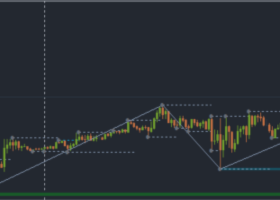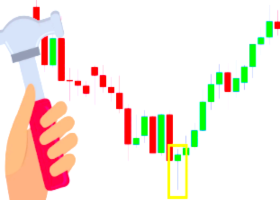
VIDEO LESSON - Two Trading Mistakes Which Will Destroy Your Account
19 November 2014, 12:11
0
296
A lesson on two of the most common mistakes that traders make when trading the stock, futures and forex markets.
One of the most common mistakes is sticking in a trade where you know you are right in your analysis, but the market continues to move against you. As the famous economist John Maynard Keynes once said:
"The markets can remain irrational longer than you can remain solvent"
Perhaps one of the best examples of this are those who shorted the NASDAQ into the runup in 1999 and early 2000. At the time it was pretty obvious that from a value standpoint NASDAQ stocks were way overvalued and that people's expectations for growth that they were buying on were way out of line with reality. There were many great traders at the time who recognized this and began shorting the NASDAQ starting in late 99. As you can see from the below chart and the huge sell off that ensued after the peak in 2000, these traders were right in their analysis. Unfortunately for many of them however stocks continued to run up dramatically from already overvalued points in late 99 wiping out many of these traders who would eventually be proved correct.
For those traders who are able to initially move on from trades where they feel they are correct but the market moves against them, another common theme which arises is for a trader to initially stick to his plan, but after being proved correct and missing out on gains he becomes frustrated and deviates from his plan so that he will not miss out on another profitable opportunity.
One place of many where I have seen this time and time again is when watching traders who trade reversals at support or resistance levels. Many times when the market touches a support or resistance level it will have a brief spike upwards or downwards which hits the stops of a trader looking to profit from the reversal, taking him out of the market just as it turns in his favor. Because many traders think a like, often times the level at which the trader is taken out of the market is right at his stop level as well.
After this happens once or twice to a trader he will then stop placing hard stops in the market and instead convince himself that he will manage the trade if it moves against him. This may work a few times for the trader giving him more confidence in the strategy until the market does finally break. As we have learned about in previous lessons often times when the market breaks significant support or resistance levels it will break violently to the point where the trader in the above situation is quickly down a large amount on his trade. Typically what will happen at this point is instead of taking the big loss, learning his lesson, and moving on the trader will remain in the position or worse add to it with the hopes that the market will turn back in his favor. If the trader gets lucky and the market does turn back in his favor this only goes to support this bad habit which will eventually knock him out of the market.
Successful traders realize that situations such as the above occur constantly in the market and that one of the main things that separates successful traders from unsuccessful ones is their ability to accept this, stick to their strategy, accept that loosing trades are a part of trading, and move onto the next trade when the market does not move in their favor.
One of the most common mistakes is sticking in a trade where you know you are right in your analysis, but the market continues to move against you. As the famous economist John Maynard Keynes once said:
"The markets can remain irrational longer than you can remain solvent"
Perhaps one of the best examples of this are those who shorted the NASDAQ into the runup in 1999 and early 2000. At the time it was pretty obvious that from a value standpoint NASDAQ stocks were way overvalued and that people's expectations for growth that they were buying on were way out of line with reality. There were many great traders at the time who recognized this and began shorting the NASDAQ starting in late 99. As you can see from the below chart and the huge sell off that ensued after the peak in 2000, these traders were right in their analysis. Unfortunately for many of them however stocks continued to run up dramatically from already overvalued points in late 99 wiping out many of these traders who would eventually be proved correct.
For those traders who are able to initially move on from trades where they feel they are correct but the market moves against them, another common theme which arises is for a trader to initially stick to his plan, but after being proved correct and missing out on gains he becomes frustrated and deviates from his plan so that he will not miss out on another profitable opportunity.
One place of many where I have seen this time and time again is when watching traders who trade reversals at support or resistance levels. Many times when the market touches a support or resistance level it will have a brief spike upwards or downwards which hits the stops of a trader looking to profit from the reversal, taking him out of the market just as it turns in his favor. Because many traders think a like, often times the level at which the trader is taken out of the market is right at his stop level as well.
After this happens once or twice to a trader he will then stop placing hard stops in the market and instead convince himself that he will manage the trade if it moves against him. This may work a few times for the trader giving him more confidence in the strategy until the market does finally break. As we have learned about in previous lessons often times when the market breaks significant support or resistance levels it will break violently to the point where the trader in the above situation is quickly down a large amount on his trade. Typically what will happen at this point is instead of taking the big loss, learning his lesson, and moving on the trader will remain in the position or worse add to it with the hopes that the market will turn back in his favor. If the trader gets lucky and the market does turn back in his favor this only goes to support this bad habit which will eventually knock him out of the market.
Successful traders realize that situations such as the above occur constantly in the market and that one of the main things that separates successful traders from unsuccessful ones is their ability to accept this, stick to their strategy, accept that loosing trades are a part of trading, and move onto the next trade when the market does not move in their favor.


